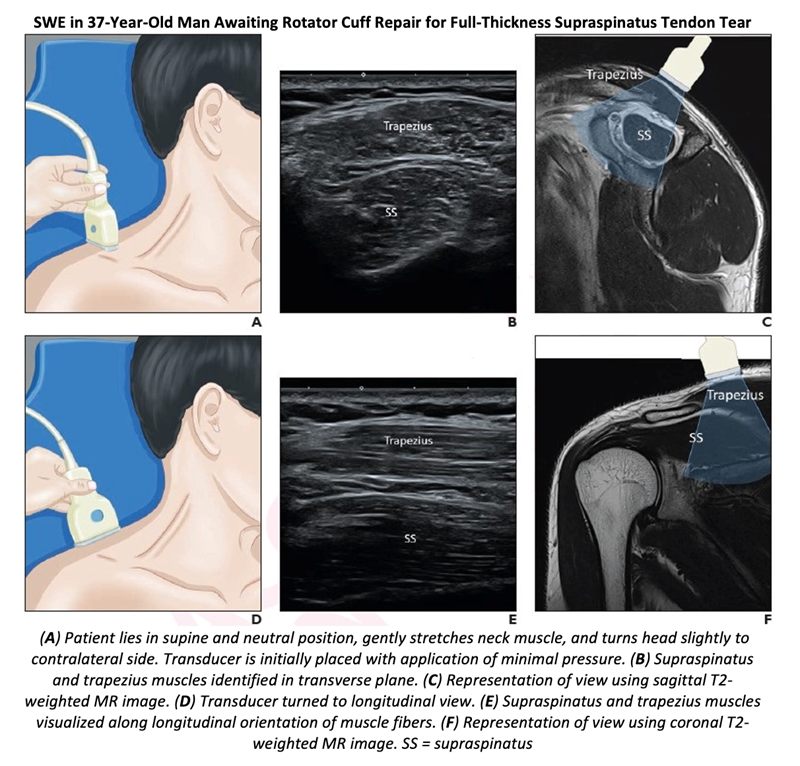Shear Wave Elastography Helps Predict Rotator Cuff Repair
 By examining properties of the muscle in a torn rotator cuff, preoperative shear wave elastography (SWE) complements existing imaging as a prognostic marker for achieving successful rotator cuff repair. The study, published in the American Journal of Roentgenology, included 74 patients (37 men, 37 women; mean age, 63.9 years) who underwent rotator cuff repair from May 2019 to January 2021, including preoperative shoulder MRI and investigational shoulder ultrasound using SWE. The researchers measured mean elasticity of the supraspinatus and trapezius muscles, then calculated the elasticity ratio between the two.
By examining properties of the muscle in a torn rotator cuff, preoperative shear wave elastography (SWE) complements existing imaging as a prognostic marker for achieving successful rotator cuff repair. The study, published in the American Journal of Roentgenology, included 74 patients (37 men, 37 women; mean age, 63.9 years) who underwent rotator cuff repair from May 2019 to January 2021, including preoperative shoulder MRI and investigational shoulder ultrasound using SWE. The researchers measured mean elasticity of the supraspinatus and trapezius muscles, then calculated the elasticity ratio between the two.
Noting that SWE-derived elasticity is higher in patients with insufficient rotator cuff repair, “elasticity ratio independently predicted insufficient repair,” wrote corresponding author Eun Kyung Khil, MD, of Hallym University Dongtan Sacred Heart Hospital in Korea.
Ultimately, preoperative elasticity ratio of the supraspinatus muscle—determined via SWE—was significantly higher in patients with insufficient rather than sufficient repair (3.66 vs. 1.83) and predicted insufficient repair (odds ratio=15.6) independently of tear size and muscle characteristics assessed by MRI and grayscale ultrasound.
Having measured SWE values in the supine position, rather than in a sitting position, to decrease tone, stiffness, and gravitational load of the trapezius muscle, “future studies are warranted to assess for differences in SWE values between the two positions,” the authors said.
